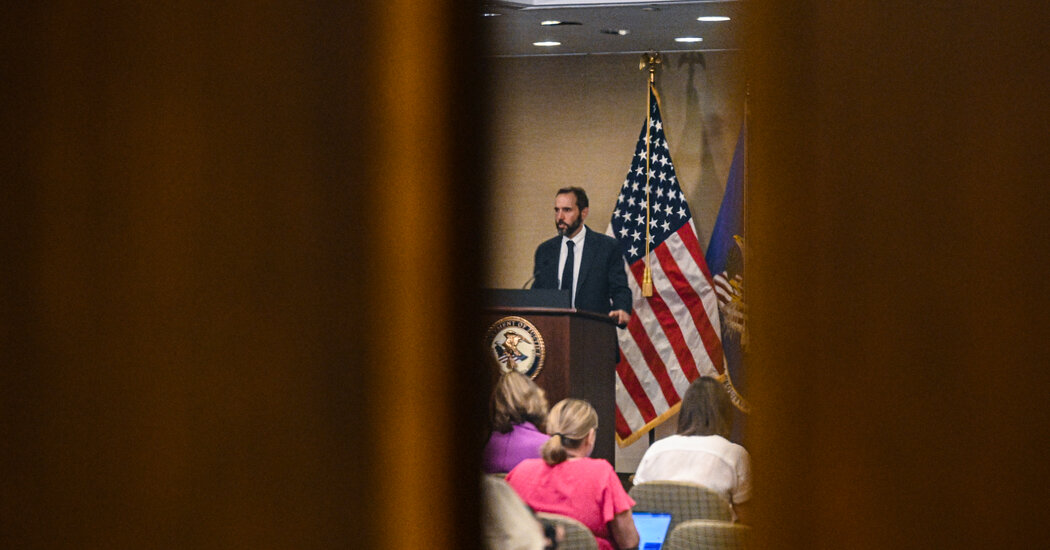State Department report on chaotic Afghan withdrawal details planning and communications failures
Washington — The State Department released on Friday an unclassified version of its Afghanistan “After Action Review” report, which faulted both the Trump and Biden administrations for “insufficient” planning and said a lack of clear communication and decision-making “added significantly” to the challenges U.S. personnel faced during the frenzied, and ultimately deadly, military withdrawal and evacuation from Kabul in 2021.
Commissioned by Secretary of State Antony Blinken, the review was completed last year and follows an earlier White House report that was released in April. A Pentagon review remains classified.
The State Department’s review, which was based on more than 150 interviews with current and former State Department officials as well as supporting documents, recaps the challenging circumstances leading up to and during the U.S. withdrawal, including numerous senior officials serving in an acting capacity, backlogs generated by the COVID-19 pandemic and a major staff transition at the U.S. Embassy in Kabul in July and August.
“The Department has compelling reasons to limit tours to one year in demanding, dangerous unaccompanied posts like Embassy Kabul, but the decision to proceed with a normal rotation rested on overly optimistic assessments of the situation in Afghanistan, which some questioned,” it said.
The 24-page unclassified document, which omits more than 60 pages of material included in the classified version, said the decisions of both Presidents Trump and Biden to end the U.S. military mission “posed significant challenges for the Department as it sought to maintain a robust diplomatic and assistance presence in Kabul and provide continued support to the Afghan government and people.”
“[D]uring both administrations there was insufficient senior-level consideration of worst-case scenarios and how quickly those might follow,” the report said.
A “major challenge,” it found, “was determining the scale and scope of the operation, especially when it came to how many at-risk Afghan nationals would be included, how they would be prioritized, and how long their evacuation might take.” U.S. officials “had not made clear decisions” on the matter, which intensified the challenges and added to the confusion faced by diplomatic and military personnel on the ground, according to the review.
WAKIL KOHSAR/AFP via Getty Images
An “overwhelming volume” of calls from the public, government agencies and Congress to the State Department about potential evacuees also added to the chaos. “Responding to such demands often placed Department employees at even greater risk and hindered the effort to move larger groups of people out,” the report said.
The U.S. evacuated roughly 125,000 people, including 6,000 Americans, over the course of its withdrawal. Dozens of Afghans and 13 U.S. service members were killed in a suicide bombing outside Hamid Karzai airport in Kabul as thousands sought to flee the country.
In a briefing for reporters convened ahead of the July 4 holiday weekend, a senior State Department official said the department had already “internalized many of these painful lessons and applied them in subsequent crises,” including in managing the U.S. response to Russia’s 2022 invasion of Ukraine and the evacuation of American citizens from Sudan earlier this year.
The report makes 11 recommendations, leading with “strengthening the Department’s crisis preparedness and response capabilities.” It suggests that for emergency scenarios the department designate a single “crisis leader” and strategic communications official, improve communication channels for diplomatic security officials and establish “flyaway teams” that could be dispatched rapidly to crisis zones.
“What this report reveals is that in crises that are longer duration, that are particularly complicated, that occur at a large scale, that impact populations well beyond the official American community, we haven’t over time had the appropriate structure and resources available to provide that foundation, a steady, constant set of capabilities that we can draw on when we’re suddenly confronting something at scale,” the State Department official said.
In a letter to the State Department’s workforce that was obtained by CBS News, Blinken said the department had “already acted upon many of the report’s recommendations to strengthen our preparedness, response capabilities, communications, and resource deployment.”
“I am grateful for that ongoing work,” Blinken wrote.
In a statement released Friday, House Foreign Affairs Committee Chairman Michael McCaul said that the redacted version of the review “completely omitted” the narrative contained in the complete, 87-page report.
“There is no reason not to produce a declassified version of the full report, as much of it is marked ‘Sensitive but Unclassified’ or ‘Unclassified,'” McCaul said. “This is another blatant attempt to hide the Biden administration’s culpability in the chaotic and deadly evacuation from Afghanistan.”



